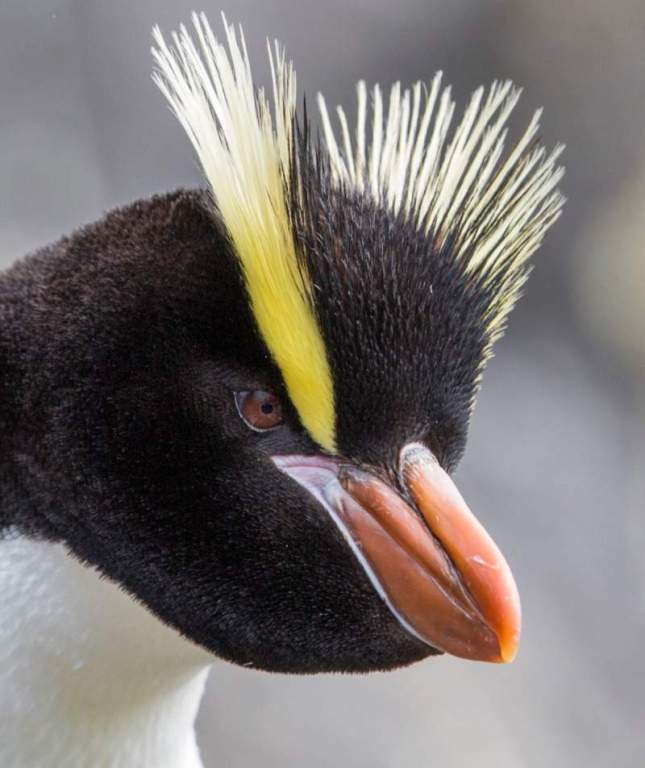The Erect-crested Penguin belongs (Eudyptes sclateri) to a super species that includes the Fiordland and Snares Penguins. Most of these breeds live in southern New Zealand (Bounty and Antipodes Islands) and/or wander erratically into Australian seas. It is also known as the Big-crested Penguin and the Macaroni Penguin. It belongs to the family Spheniscidae.
A majority of the birds visiting Australia come in winter when they are dispersed at sea, feeding primarily on krill, cephalopods, and fish. The size of the Erect-crested Penguin is 600-700 mm in length and weighs 2.5–6 kg. During summer, they gather on their breeding islands in colonies that number in the hundreds of thousands.
It is usually nothing more than a steep, rocky shore covered in thick white guano that serves as the breeding grounds. It is during October that the birds lay their eggs, and the birds arrive in great numbers during September. The eggs are laid in scrapes and crevices and held in place by the sitting bird.

When incubating, penguins usually squat erect rather than lying on their breasts. To keep the egg warm, leather-covered skin is lifted over the egg on the belly, and feet are turned in to keep it from rolling away. One young is usually reared at a time. Once the chick hatches, it is guarded alone and fed by both parents after being caught with other young. It takes adults until April to finally leave the colony after they are freed of parental duties. The Erect-crested Penguin calls with shrill cries in defense and threat and braying calls in the display.
Both sexes are similar; however, the female is smaller. Plain bluish-black above, including head, throat, and upper side of flippers. Breast and belly satin-white; underside of flippers white with a broad black base, tip, and forward edge. The tail has long, stiff, almost spiny blue-black feathers. A broad golden-yellow eyebrow stripe extends from near the gape to over the ears, rising to the brush-like crest on either side of the head. Eyes brown. Heavy bill reddish brown, edged with a flesh-colored skin strip around the base. Feet and webbed toes are pinkish-white; nails and soles are black.
The immature resemble adults but the crests are much smaller and whiter and the throat is ashy-white. The downy young head, throat, and upper surface are dusky brown; breast and belly white; bill and feet blackish, the former tipped white. The Erect-crested Penguin is a beach-washed bird on the south coasts of Victoria, South Australia, Western Australia, and probably Tasmania. Breeds on islands south of New Zealand. There are no races. Nesting and breeding occur in early spring through summer. Nest in an unexplained crevice or scrape.
Erect-crested penguins usually lay two eggs; chalky bluish-white; round-ovoid, first about 77 x 49 mm, second largest, about 89 x 56 mm. The incubation period is 34-36 days, for both sexes. The first egg is usually rejected. Young fledged in 75-78 days. There has been a decline in the population over the last century. Currently, the IUCN Red List lists the species as endangered and its population is estimated at 150,000 mature individuals.
Read More – Rare Golden Penguin Spotted Along the Shore of Antarctica








